I slipped into my first metamorphosis so quietly that no one noticed___group exhibition curated by Gitte Villesen at Den Frie in Copenhagen
- 14. June – 18. August 2019
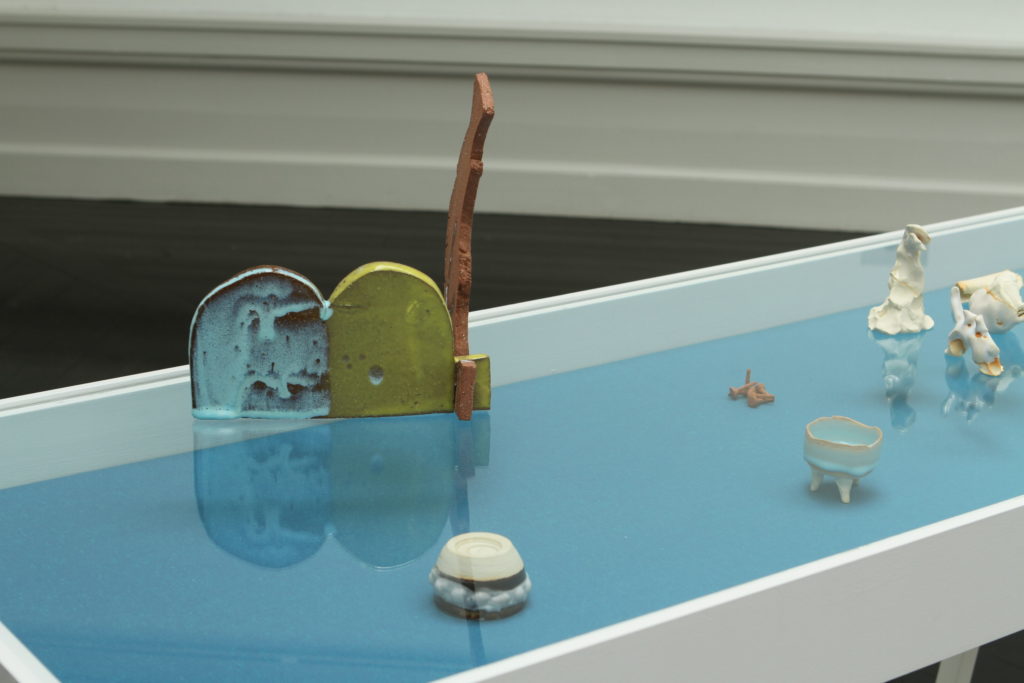
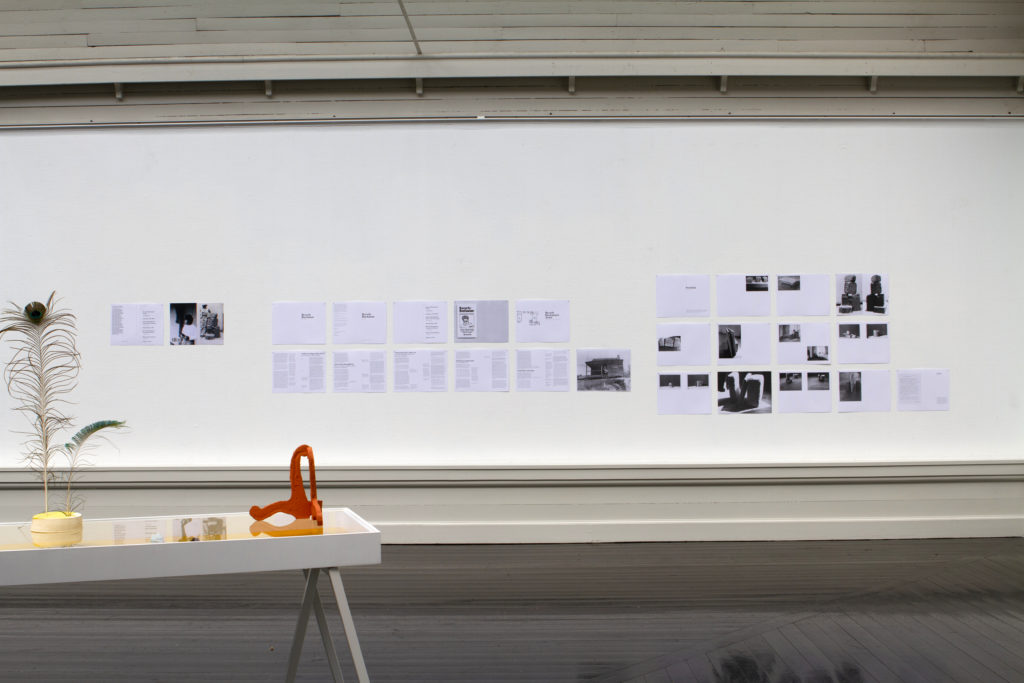
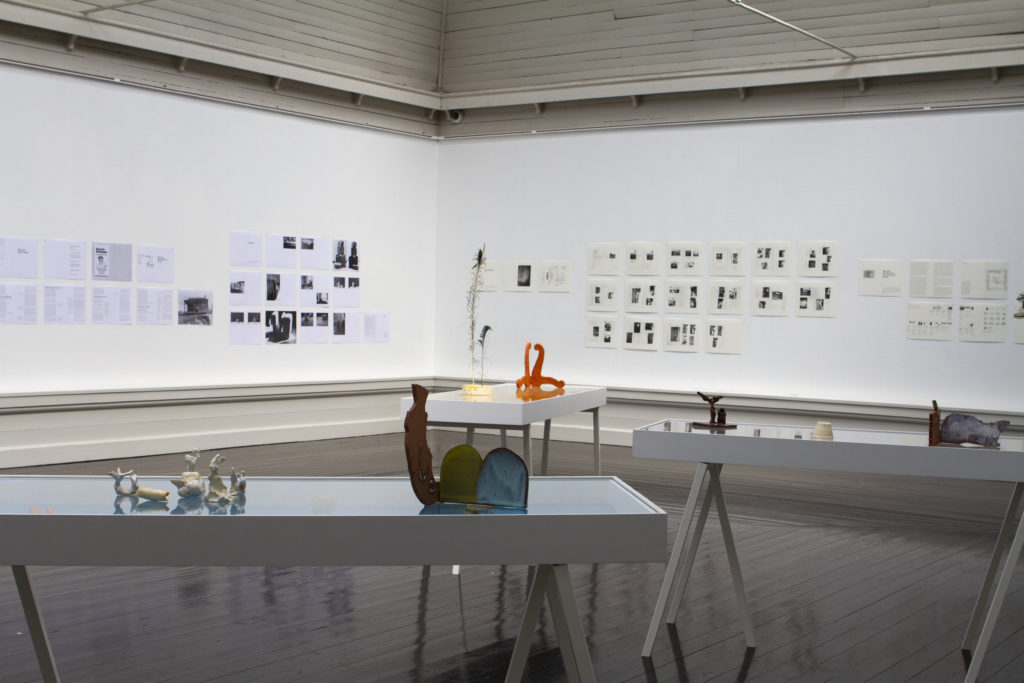
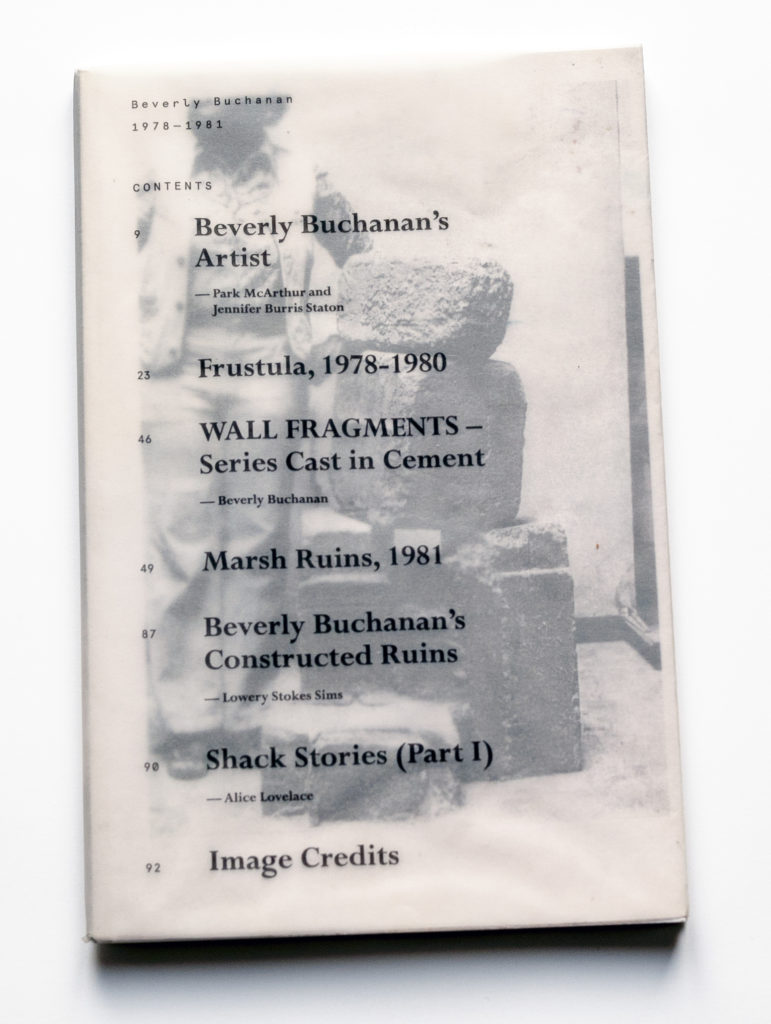

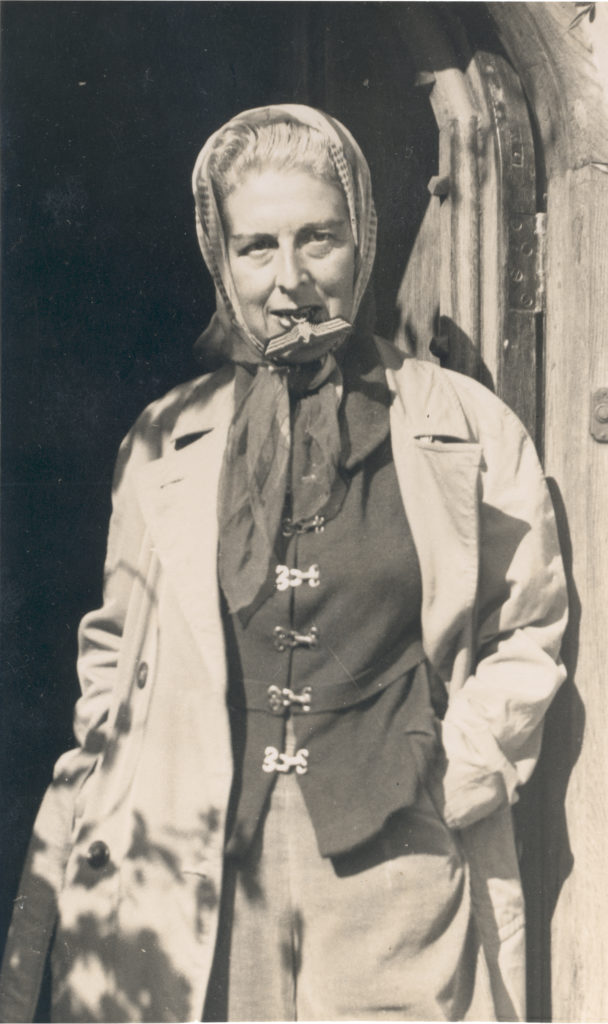
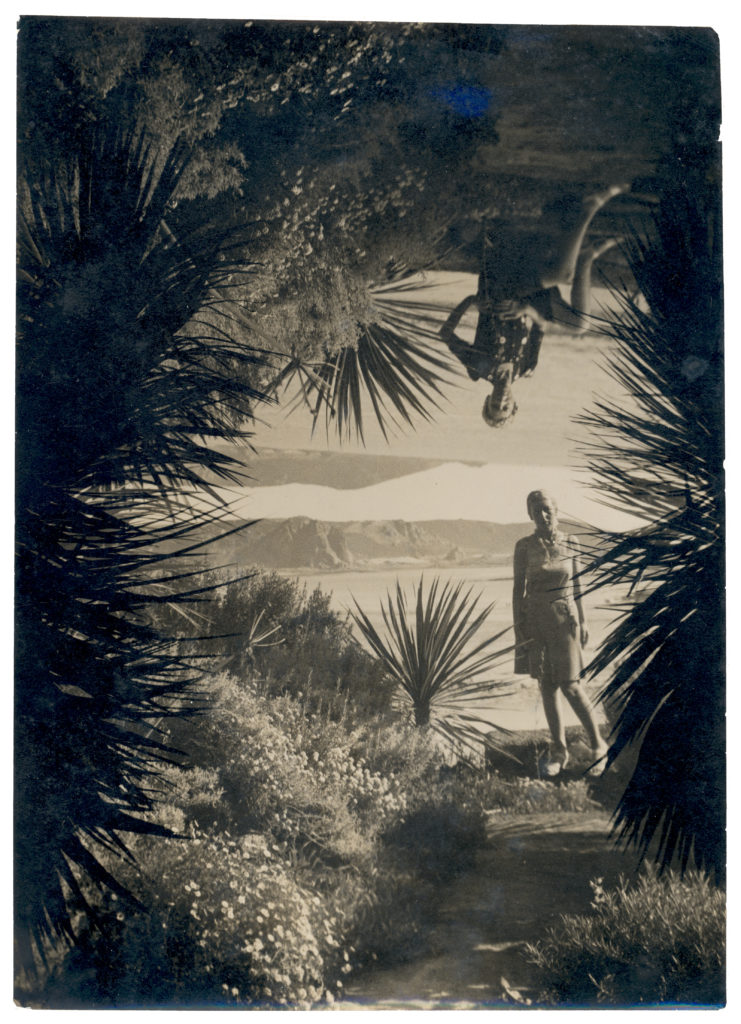

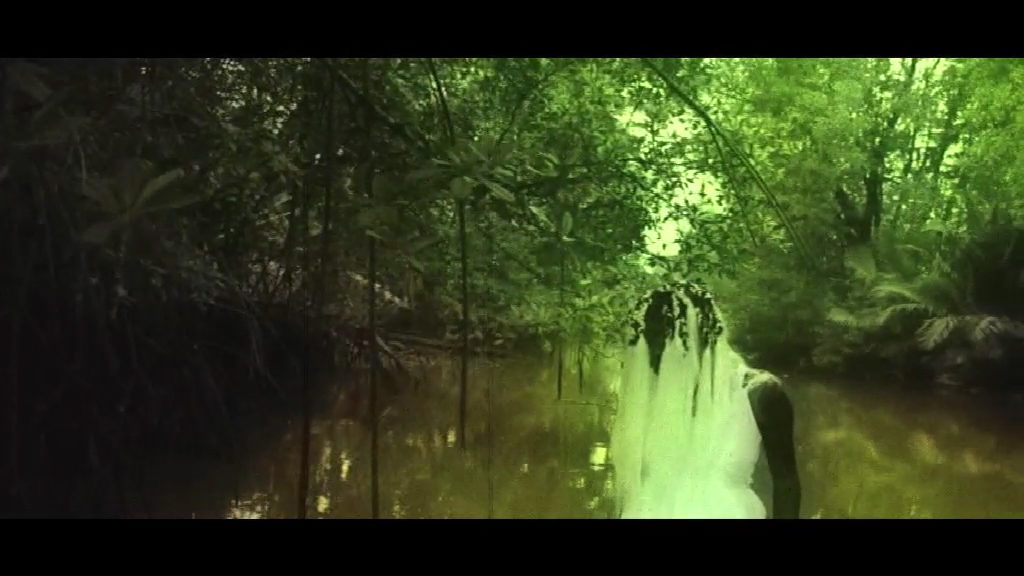
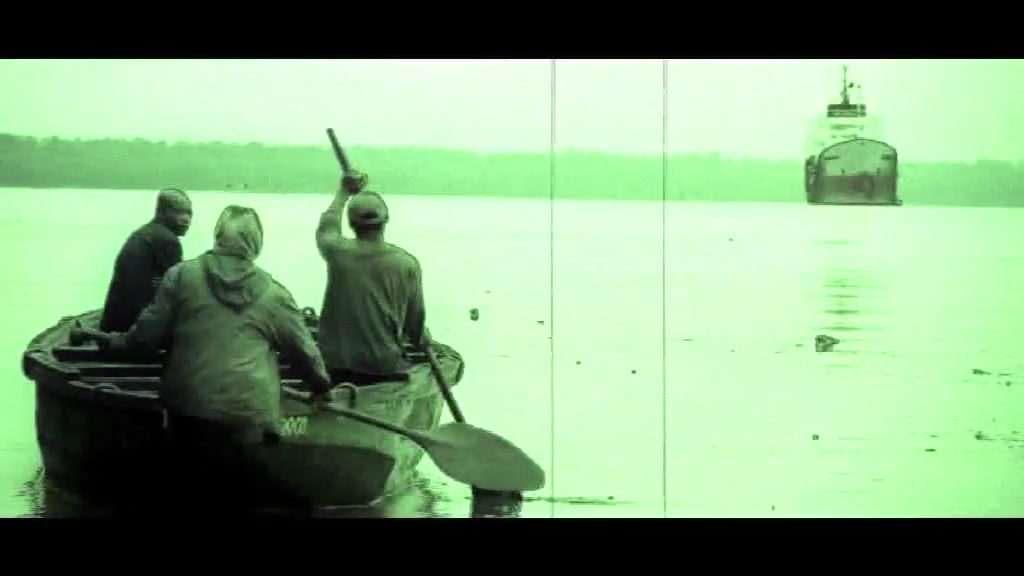
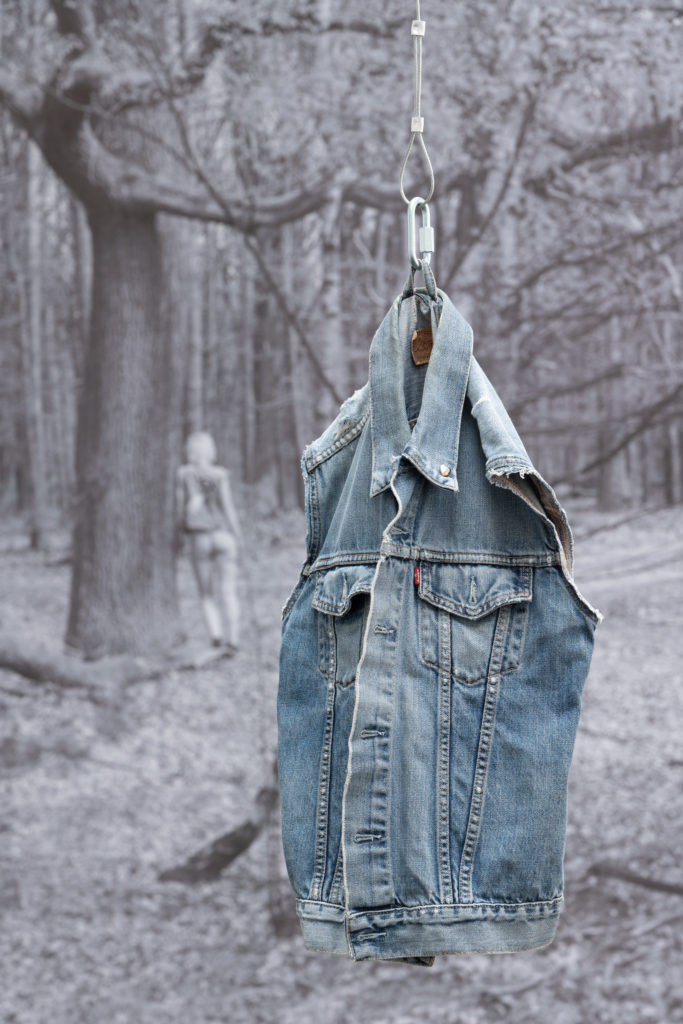
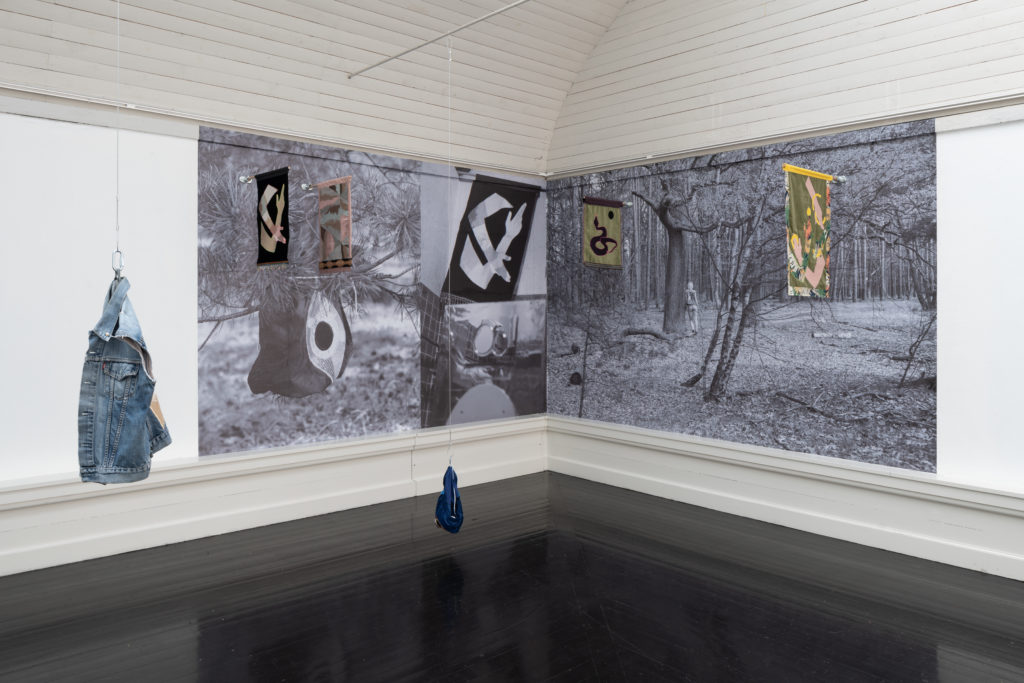
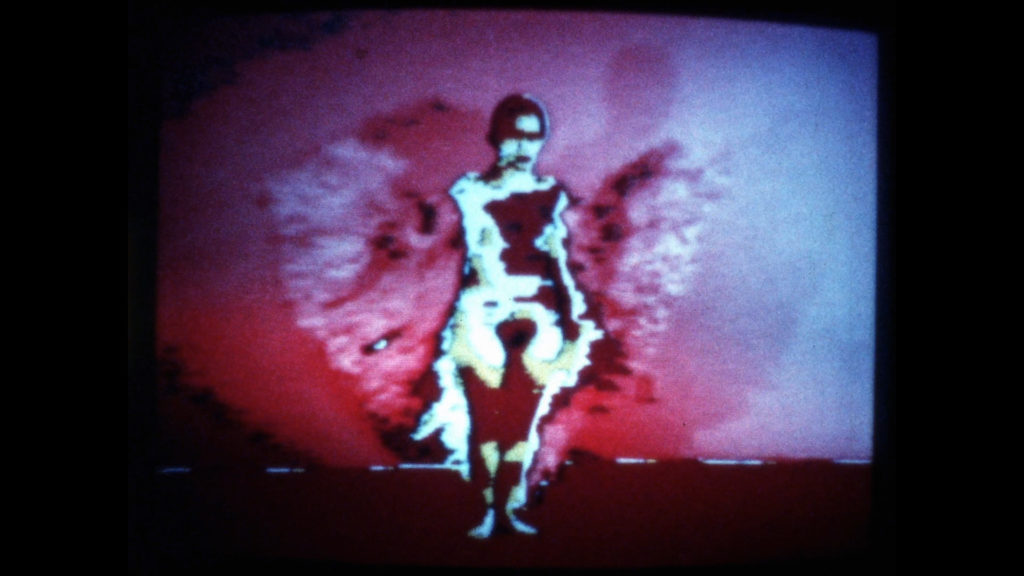
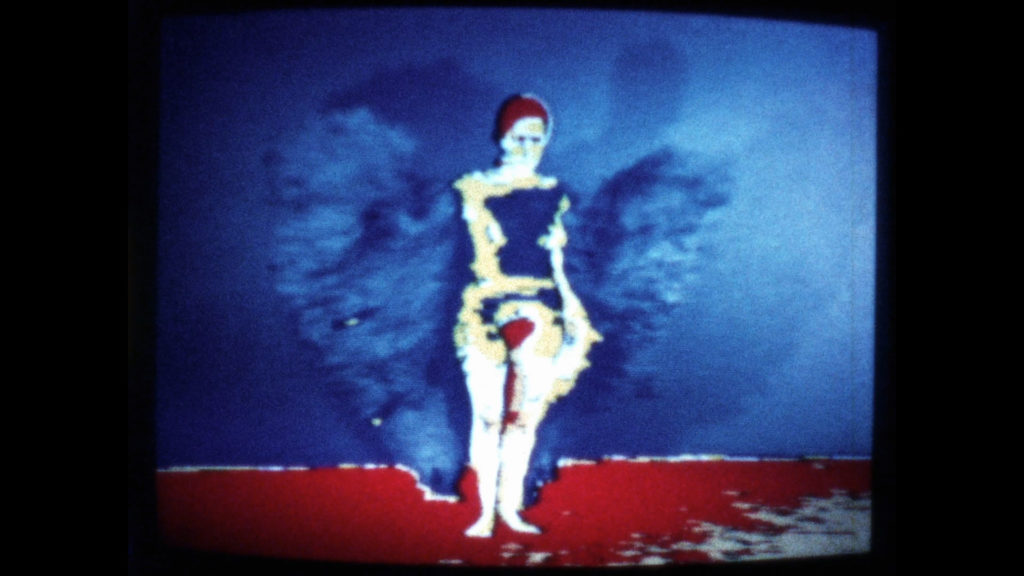
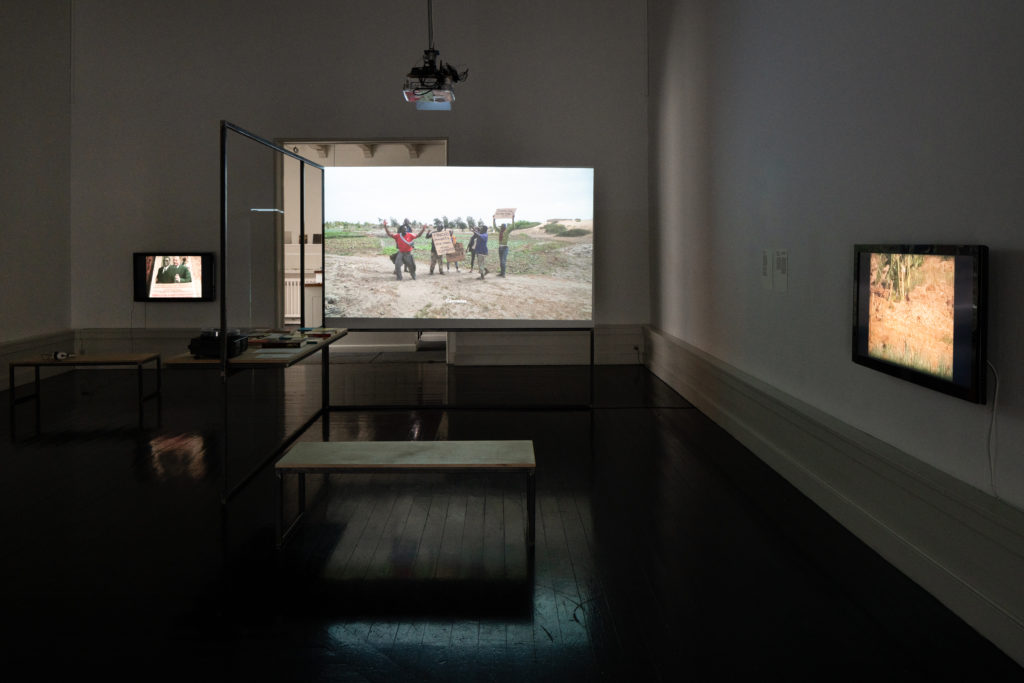

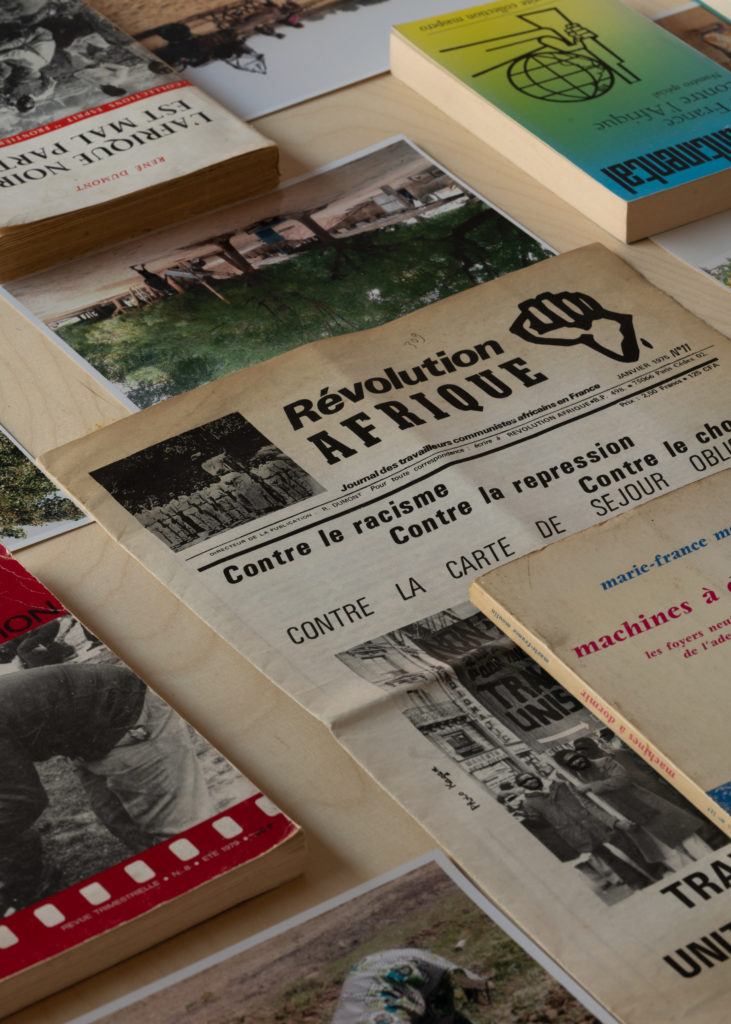
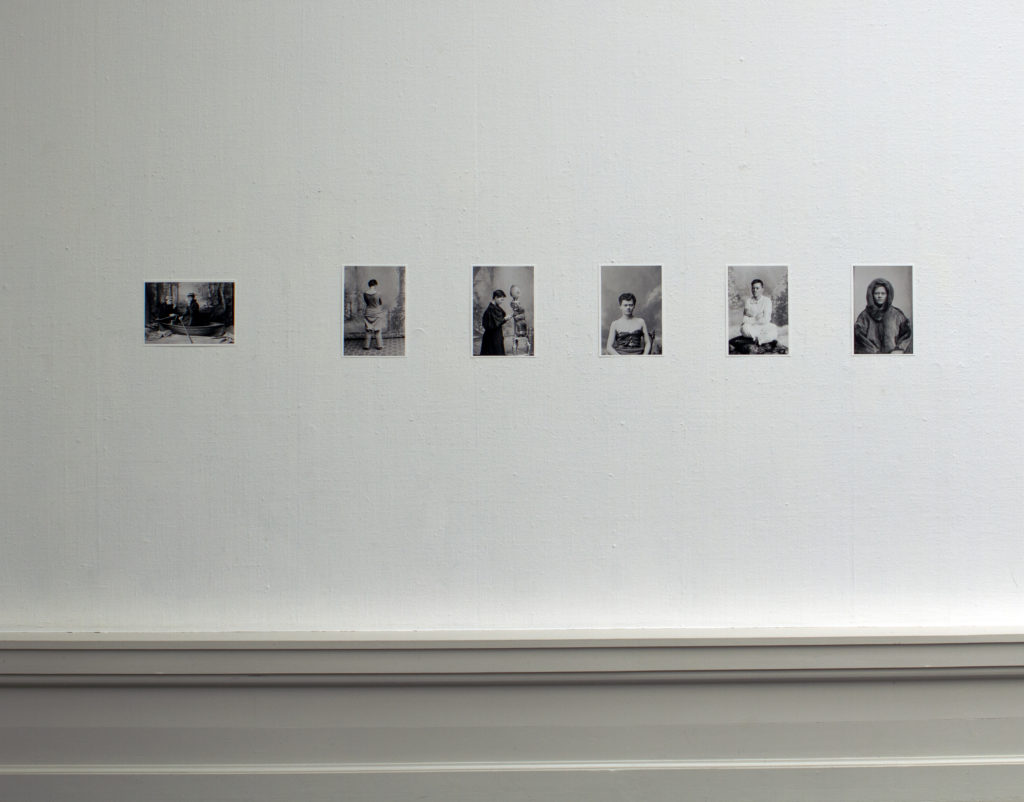
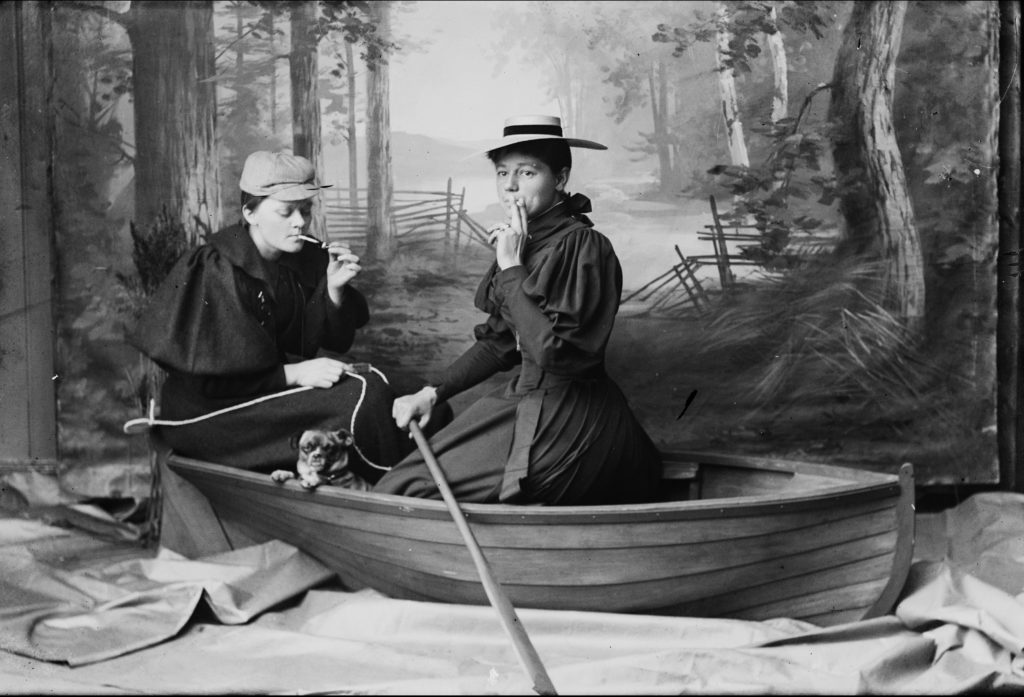
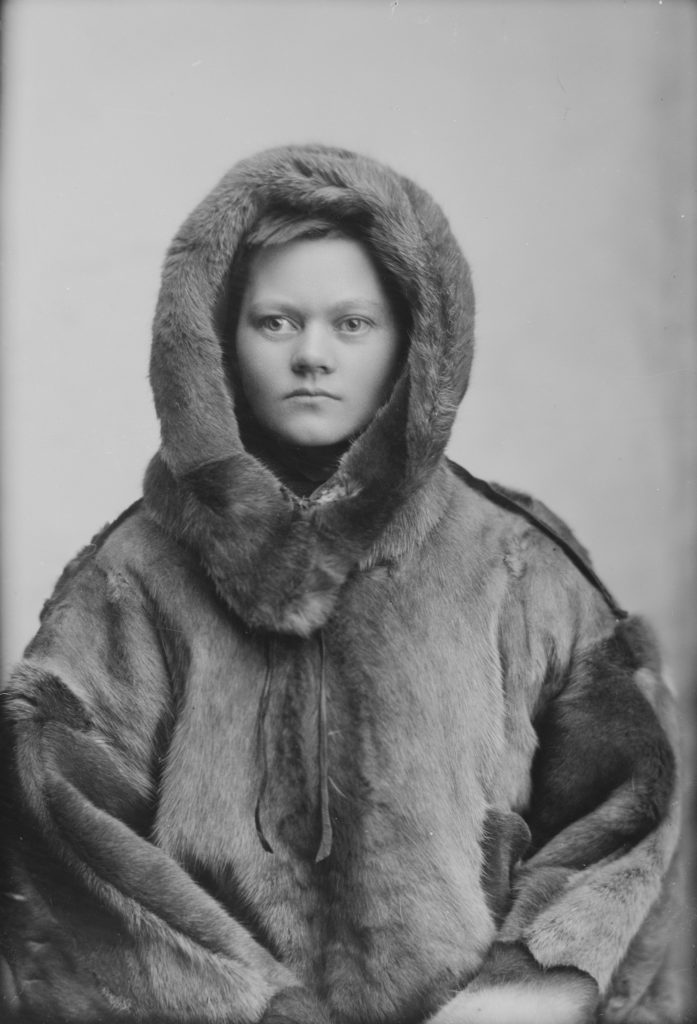
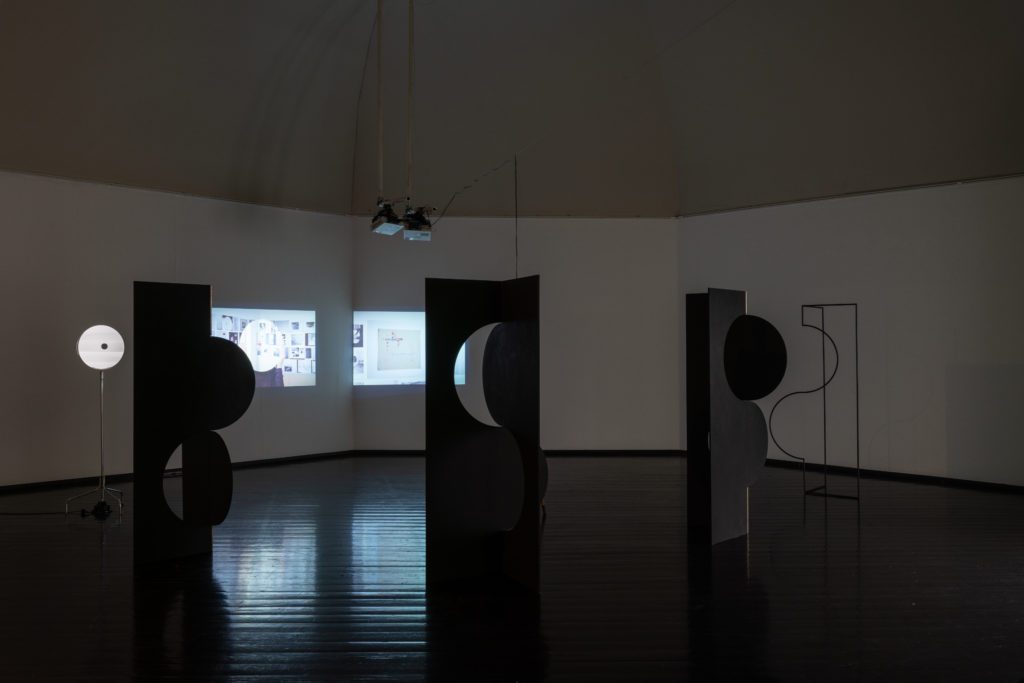
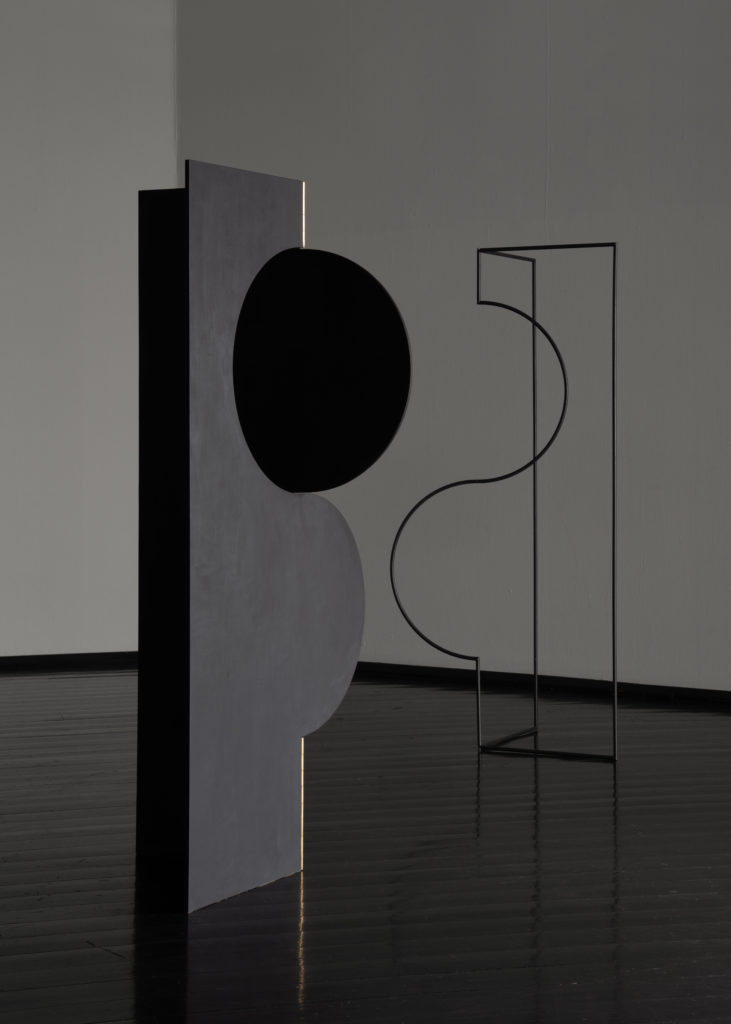
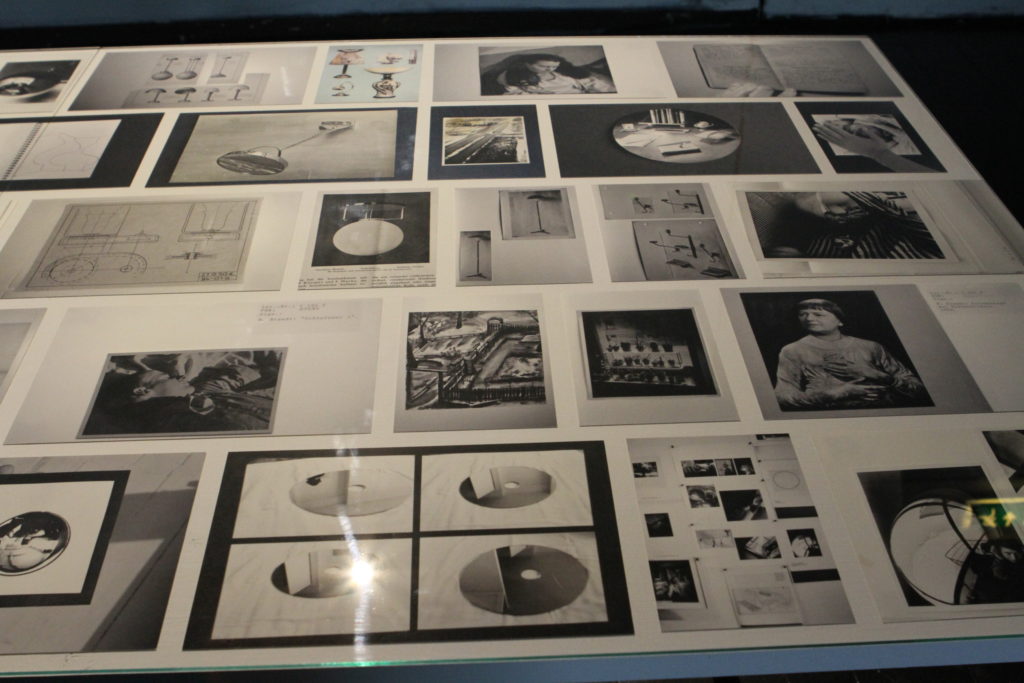
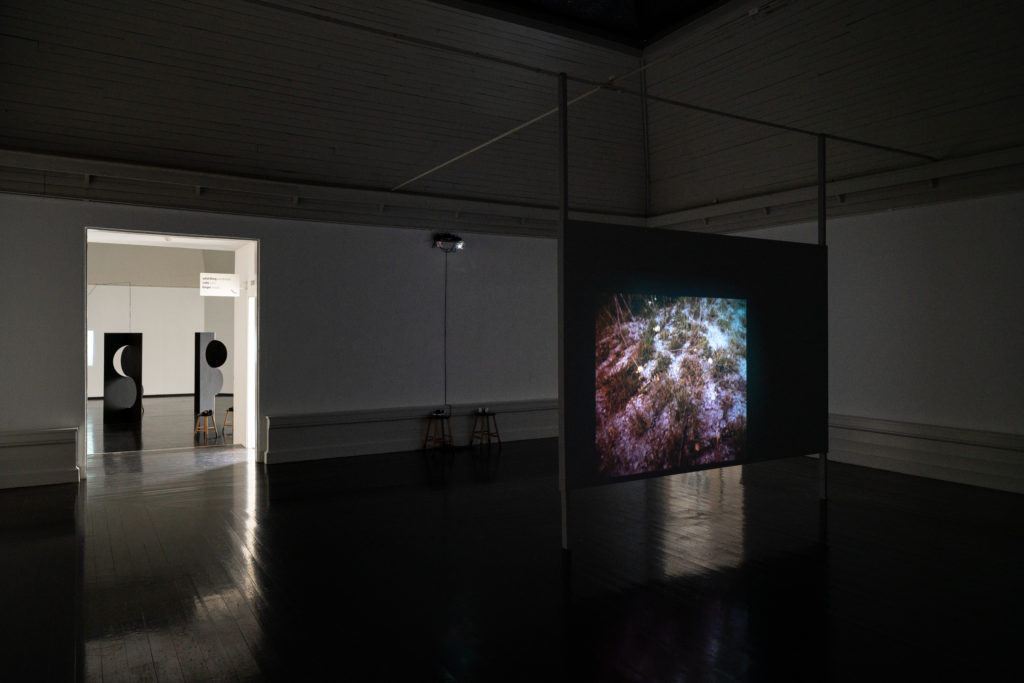
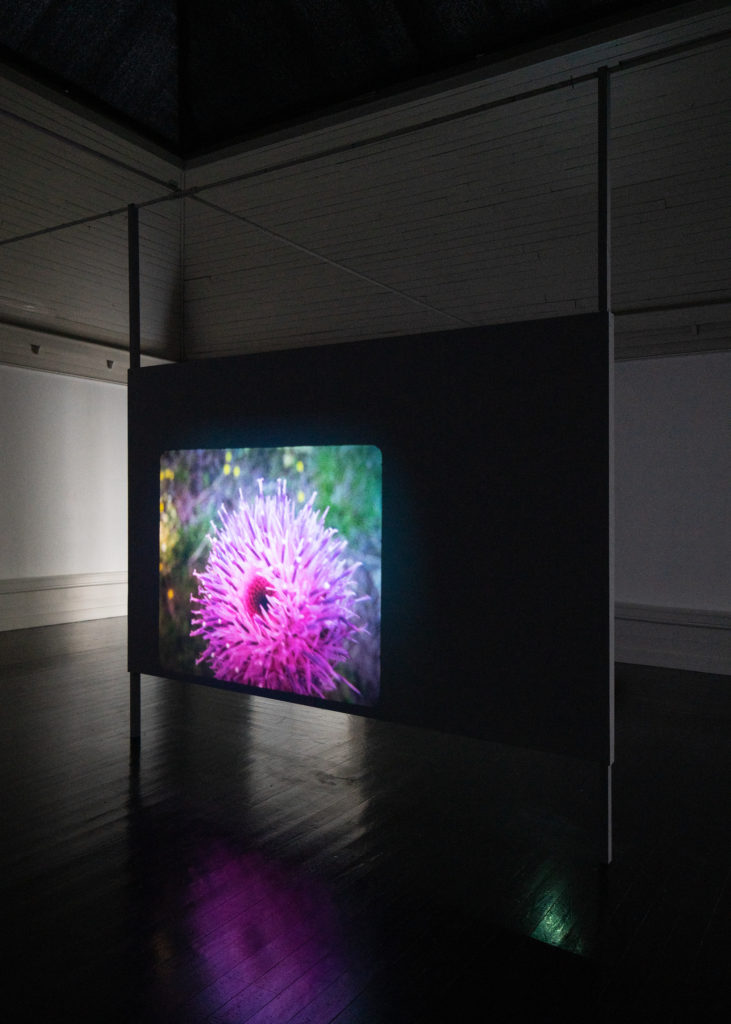

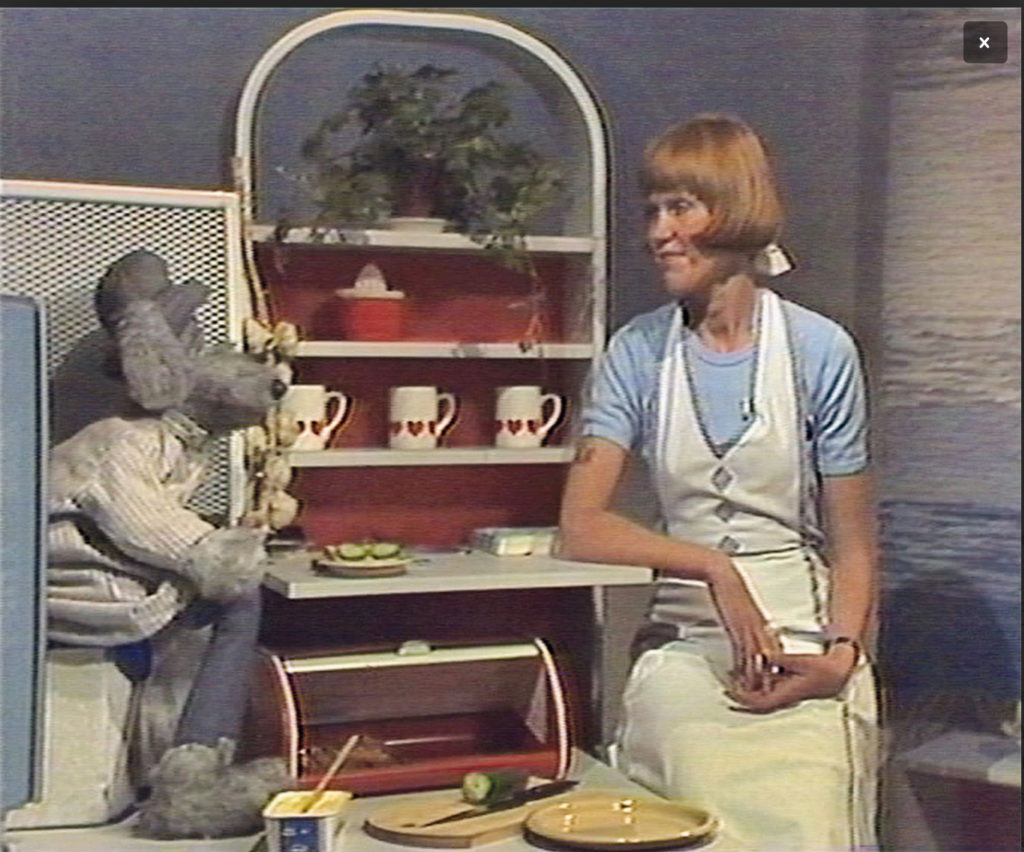

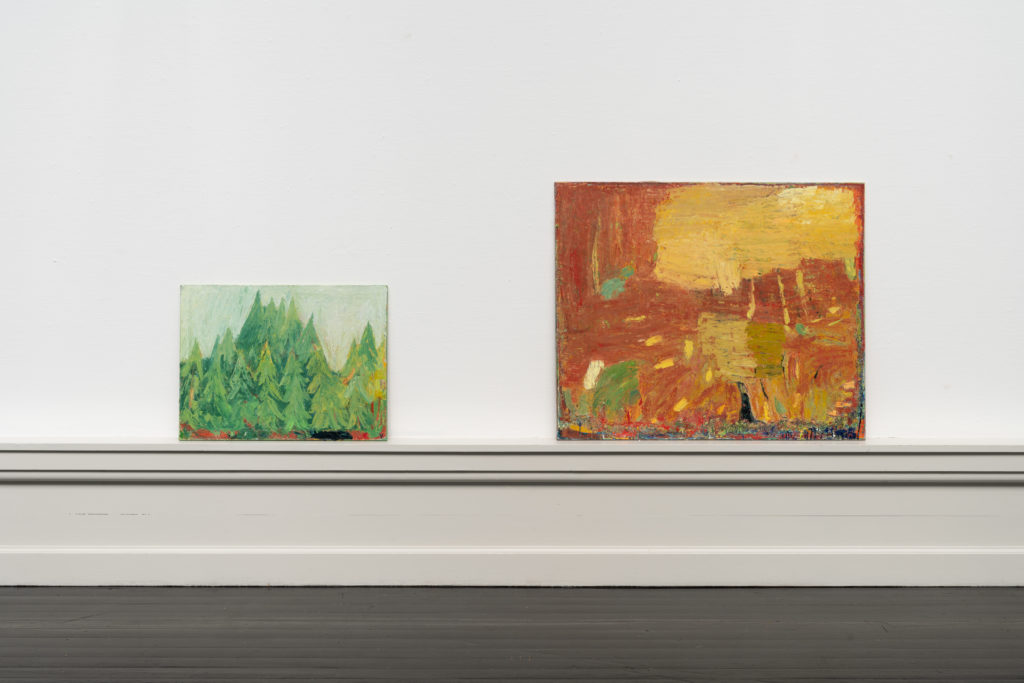
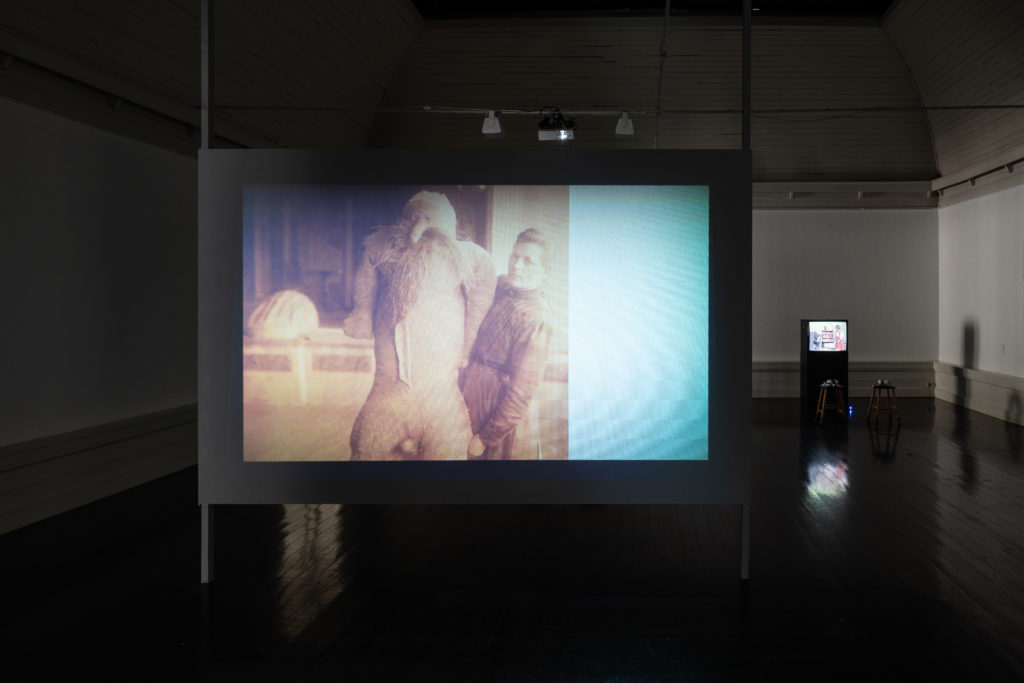
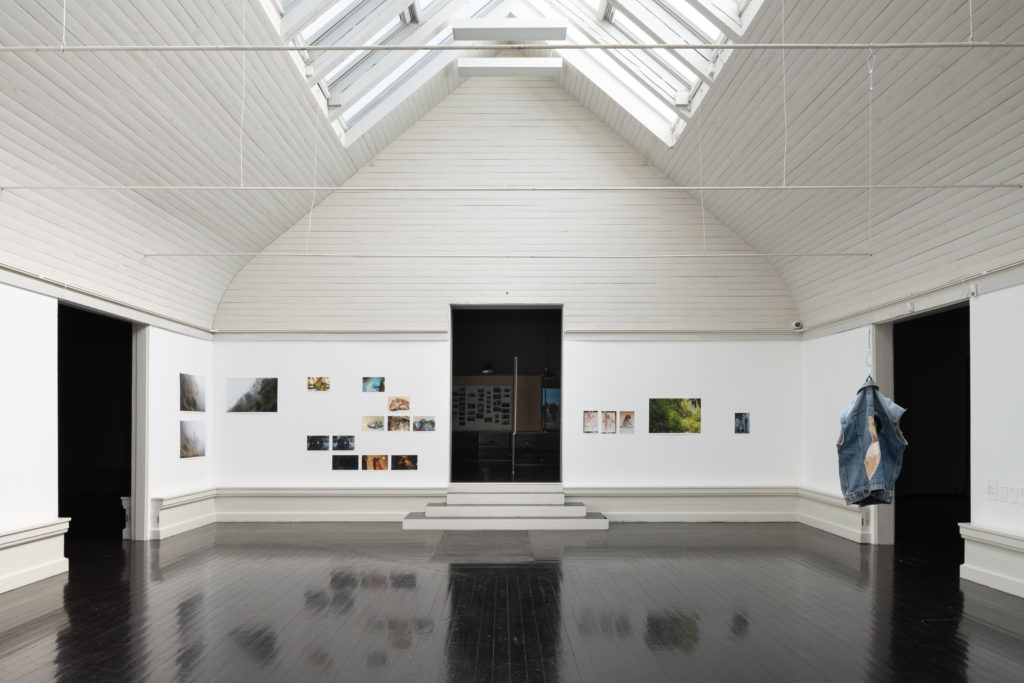
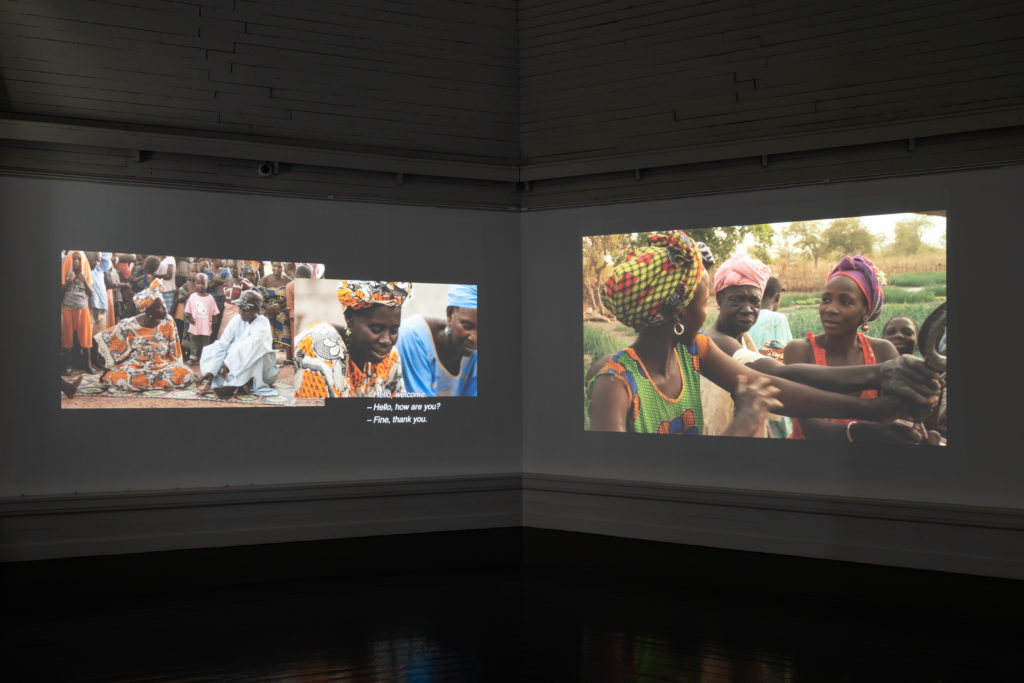
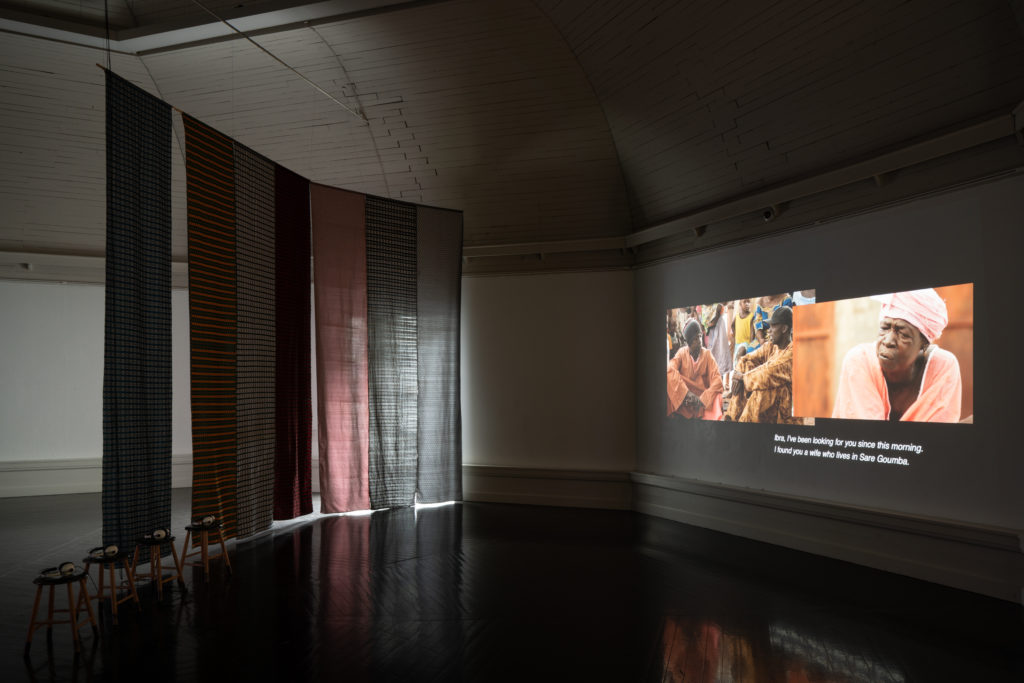
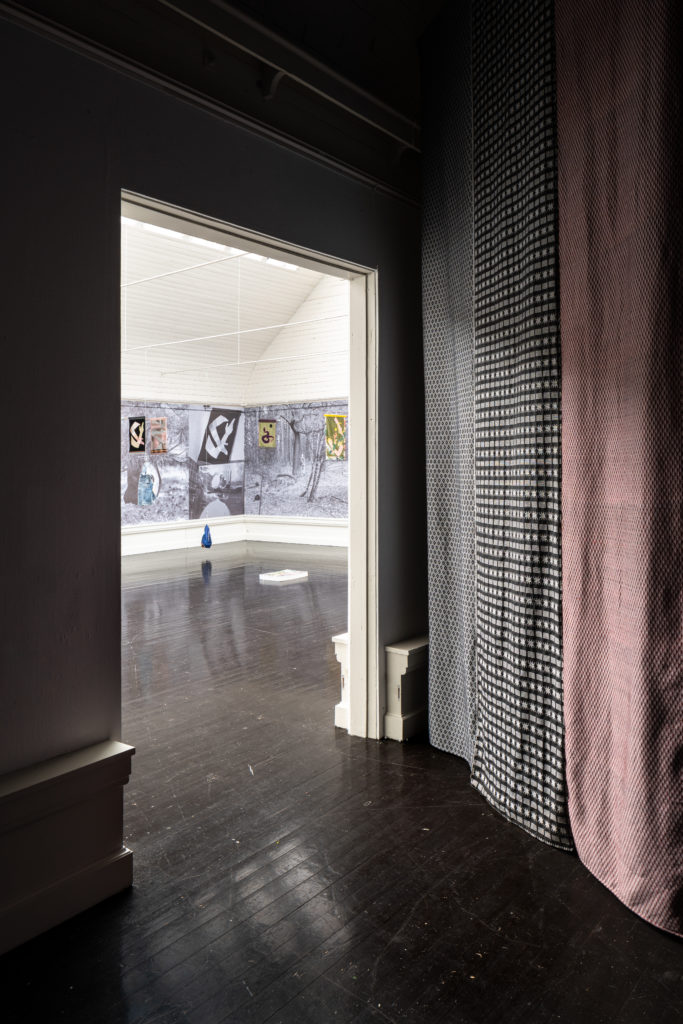
- 14. June – 18. August 2019
THE EXHIBITION FEATURES WORKS BY:
Ana Mendieta, Alex Mawimbi, Beverly Buchanan, Claude Cahun and Marcel Moore, Elke Marhöfer and Mikhail Lylov, Emma Haugh, Gitte Villesen with Dendal, Saidou Ndiaye, Amadou Sarr, Acroma and Chiara Figone, Ingrid Villesen, Laura Horelli, Marie Høeg and Bolette Berg, Pia Rönicke, Raphaël Grisey, Bouba Touré, Káddu Yaraax, Sidney Sokhona, Somankidi Coura Cooperative, and others
–
Review by Frida Sandström „Narrative Backfire“
–
Den Frie Centre of Contemporary Art regularly invites artists to share their unique collegial perspective on artist practices by curating an exhibition based on their own artistic position. Following from the latest such invitation, Gitte Villesen’s artistic interest – both form and attitude – is the starting point for I SLIPPED INTO MY FIRST METAMORPHOSIS SO QUIETLY THAT NO ONE NOTICED.
Villesen has chosen two remarkable artist duos as a historical starting point for the exhibition: Marie Høeg (1866–1949) and Bolette Berg (1872–1944), who ran a classic photo studio for portraits and landscape photos in Norway around the turn of the 20th century, and the better known collaboration of Claude Cahun (1894–1954) and Marcel Moore (1892–1972).
–
THE TITLE of the exhibition is qouting the first linie from Octavia Butlers novel „Imago“ from 1989. (It is book three of the Xenogenesis series).
–
INTRODUCTION OF WORKS:
ANA MENDIETA (1948 – 1985)
“Butterfly“, 1975, video
Ana Mendieta (1948–1985) is especially known for her ritual explorations of body and nature. Technical experiments using video were also an important element of her work. The video work “Butterfly“ is a good example of this. “Butterfly“, created long before the advent of computer-based image manipulation, is the result of a complicated process. The video consists of multiple layers, staring with a video recording of herself wearing wings. She then played back the video on a monitor and manipulated the RGB colours while filming the monitor on Super8 film. This roundabout process was the only way at that time to achieve such an effect. Mendieta is an important reference in Emma Haugh’s performance shown at the exhibition’s opening, Poverty of Vision.
ALEX MAWIMBI (formerly known as Ato Malinda)
“On Fait Ensemble“, Video 10´47
“I prefer to go by Alex Mawimbi. I changed my name to escape an abusive past. You may mention this to your audience.”
„On Fait Ensemble is about Mami Wata, an African water spirit, whose image arrived on the African continent at the beginning of the 20th century on a chromolithograph brought from Europe. The market performance in the film invokes a historical re-enactment in which an image of the chromolithograph is given to the marketeers by Papai Wata, the European concomitant to Mami Wata. This video was filmed in Douala, Cameroon, where worshippers of Mami Wata are high amongst the populace. She is believed to bring solace and good fortune to her worshippers.
– Alex Mawimbi
BEVERLY BUCHANAN (1940 – 2015)
The book “Beverly Buchanan 1978–1981“, printed in 130% scale.
Athénée Press, 2015. Edited by Park McArthur and Jennifer Burris Staton.
“I did a piece somewhere in Orangeburg, somewhere in my hometown. It’s probably overgrown now because it was just spontaneous. I stopped the car and I had some stones in the car, actually looking for a place to put them. And I saw this site that for some weird reason I thought could be part of a graveyard. It’s not, but it was there – an industrial area that had recently hired black men. And that had never happened before and I wanted something there to commemorate that without having a big giant sign that said “We finally hired some black people!” So I took the stones I had in my car and made a little pile there. But I didn’t put a sign”.
– Excerpt from the book Beverly Buchanan 1978–1981, page 16
The book’s chapter “Frustula 1978–1980” contains photographs of a series of “stone” sculptures cast in concrete and painted with acrylic paint. The chapter “Marsh Ruins, 1981” comprises scanned excerpts of a report compiled by Beverly Buchanan for the Guggenheim Fellowship Committee after the creation of the public sculpture Marsh Ruins. Specific historical and political narratives are closely interwoven in the choice of materials and creative processes for both the “stone” sculptures and Marsh Ruins. Marsh Ruins is made from tabby, a type of concrete made from shells that was used in the in the construction of 19th century homes and walls on slave plantations in South Carolina, Georgia and Florida.
CLAUDE CAHUN (1894 –1954) and MARCEL MOORE (1892 –1972)
Photographs
Cahun and Moore are especially known for a series of photos that challenge the performative aspects of gender and sexuality. For this exhibition, I have chosen to focus on photos from their time on the island of Jersey. In 1937, Cahun and Moore moved to Jersey, located off the French coast, to escape from Nazism, but the war caught up to them when the German military arrived on the island. In response, Cahun and Moore launched an anti-Nazi propaganda operation. Traversing the island, they distributed handmade flyers announcing the defeat of the Germans or giving the impression that the Germans were about to lose the war. In her memoirs, Cahun describes how she and Moore successfully created the illusion of a large-scale resistance movement. After several years of living in danger, they were arrested for treason and subjected to a violent interrogation when they refused to reveal the names of their male co-conspirators – which the interrogating officers insisted must exist. They found it impossible to believe that two middle-aged women had undertaken such a bold and extensive campaign of their own initiative. Cahun and Moore were sentenced to death but the execution was never carried out.
ELKE MARHÖFER AND MIKAHIL LYLOV
„Some plants emit sharp crystals when gnawed by animals, others perfume to make friends
And
A peacock’s tail feathers might attract females, yet is anything but helpful for individual or species survival
Vitrines with ceramics and peacock feathers”
“…we understand the ceramics as being part of an inclusive expressive or creative continuum, which humans share with plants and animals. Making tea cups, or color bubbles, bears similarities to the peacock creating images (of eyes) with his feathers. This does not suggest that difference is insignificant, but on the contrary, that difference between the artist/human and the peacock/animal can only be a question of degree as opposed to structural difference. We hope the ceramics help us (humans) to negotiate our proximity to animals and plants…”
– Elke Marhöfer and Mikhail Lylov
ELKE MARHÖFER
“Becoming Extinct (Wild Grass)“, video, 23´
“The film and research project is an exploration in ecologies of extinction and collaborative survival in the Southern Russian steppes. The two concepts of extinction and becoming are difficult to think together, both are more than just a metaphor and none of them offer an easy way out. Tossing more species to the margins increasingly faster, extinction highlights the extraordinary level of disturbance and precarity that the bonding of science and capitalism has imposed on our and other species. Most creatures and places of the earth have been measured, consumed, exhausted, infected, eliminated, and otherwise killed. Becoming adds an affective dimension to our relation with the environment and helps to grasp the disappearance of species, not only as destructive and final, but as transitory.
Becoming Extinct (Wild Grass) mobilizes our imagination for a future life without reconciliation or a place to hide. It embraces the struggle of a collective survival together with the nonhuman. To make this possible, we might need to establish an inclusive approach to ecological conservation and survival, where human reproduction is not the most important factor. We might begin by perceiving the world not as “our” environment, “our” climate, “our” epoch, “our” survival, “our” films, or “our” images. Attempting to do this, the project focuses on plant sensing; an archeological excavation of horses from the late Palaeolithic period; an ecological restoration project of grassland; and cyanobacteria. Assemblages of cyanobacteria sparked what is called the Great Oxygenation Event, dramatically changing the metabolism and composition of the planet by converting the more inhospitable gases in the young earth’s atmosphere into oxygen, making plant and animal life possible, but also leading to the extinction of oxygen-intolerant anaerobe organisms”.
– Elke Marhöfer
EMMA HAUGH
“Poverty of Vision“, performance at the opening
“Sex in Public“, installation
“Poverty of Vision is a drag performance that knits together intersecting critiques of the 1980s. Considering the 80s as a regressive period when contemporary art discourse and institutional frameworks actively forgot the radical redefinitions of what art could be and who it could be for that had gone before in the 1970s, the piece proposes that “looking into archives is all about looking at what isn’t there”. Integrating institutional critique with a queering of childhood, an overwriting of the archive with the work of Ana Mendieta’s aesthetics of disappearance, and a feminist reading of American minimalism, Poverty of Vision incorporates drag performance and the backing track as a means of overlaying pop culture with so-called high culture in a questioning of what kind of traces culture leaves behind and how it is possible to intervene in and undermine the archives of power. The performance, commissioned by the Irish Museum of Modern Art (IMMA) and The Irish National Visual Artists Library (NIVAL), began with research in the ROSC archives. ROSC was Ireland’s answer to the international biennial and large scale art expo, modelling itself on Documenta and placing commercialised gallery works from the strongest art markets on a pedestal. Claiming to bring the best of international contemporary art to Dublin, the exhibition (which ran on a quadrennial basis from 1967–1988) offers a model of how Euroethnic, heteronormative, male-dominated, contemporary art history has been constructed, commended and preserved. ROSC led to the founding of IMMA in 1991.
– Emma Haugh
The installation “Sex in Public“ consist of (in this version) Flags for Queer Cruising Sites, Clothes for Queer Cruisers, and the wall-pasted black-and-white photo series Dyke Action.
“The photo series documents a performative cruising action Haugh made in collaboration with artist Line Skywalker Karlström, in which flags and clothes become performative objects or talismans for desire that Haugh uses to propose a queer iconography of connectedness and identity shifts. Haugh’s works raise questions about the role of social space in shaping identities. What roles, meanings, and attributions are ascribed to communal and public spaces, and how do they impact non-normative bodies? What influence does this impact have on social visibility and safety? (….) Haugh engages queers in collective acts of ritualized land and property reclamation to develop a shared imaginary and re-appropriate sexual utopias that feed a transformative queer politics, either for pleasure or for care. Her performative works propose an alternate sexual narrative seeking to bring analogue forms of intimacy and touch out of the domestic sphere into the public”.
– Excerpt of text by Nadja Quante
INGRID VILLESEN
Paintings
“Many of the works and the artists at the exhibition intersect in a variety of different encounters relating to theme, narrative method and work relations. Ingrid Villesen is my mother. We have ongoing conversations about our art, and she is still one of the people I use to test out my work during the creative process. We share an intuitive understanding, an ‘eye’, and an attitude when it comes to our work.
LAURA HORELLI
“Haukka-pala (A-Bit-to-Bite)“
“Haukka-pala (A-Bit-to-Bite) is set in a TV studio kitchen. A woman in an apron is speaking to a puppet dog. Small, healthy snacks are prepared. The weekly educational series from the 1980s broadcast on Finnish State Television was directed at an audience of pre-school children, and sought to familiarise them with a balanced diet. In the video, the public scenes are interrupted by an element of subjectivity: a commentary—the voice of Laura Horelli—searches for memories of her deceased mother by viewing these staged and artificial scenes from the Haukka-pala series. The public image is deconstructed by way of the personal. Horelli’s mother wrote the script and acted in the children’s cooking program Haukka-pala from 1984 to 1986. Her personality comes across in the series, where she played a double role as an expert nutritionist and a mother figure. The voice-over commentary speaks of loss and trauma from a ten-year-old’s perspective. Excerpts from the diaries of Horelli’s mother, written when she was in her mid-twenties, are also read out”.
– Laura Horelli
MARIE HØEG (1866–1949) AND BOLETTE BERG (1872–1944)
Photographs
Høeg and Berg founded a classic photo studio for portraits, landscape photography, etc. in 1895, known as “Berg & Høeg”. In the 1980s, many years after their deaths, a box containing a large collection of their glass negatives, labelled “private”, was discovered. In these “private” photos, taken in the period 1896–1905, the two women create staged images that challenge the normative views on gender and roles, negotiating the right to define oneself as one sees fit. In addition to being professional photographers, they were also active in the women’s liberation movement. Høeg founded a discussion society for women known as The Sociable Discussion Society, and together they fought for women’s right to vote and founded a publisher that printed and distributed feminist publications. I became aware of the photographs through F-R-A-N-K, an Oslo-based platform started by the artists Sille Storihle and Liv Bugge, who had worked with the photos a number of times, including for an exhibition entitled Marie Høeg meets Klara Lidén, a project that art historian Mathias Danbolt has written about.
PIA RÖNICKE
„The work Notes on MB“
“The work Notes on MB, 2014 is based on the archives and photographic practice of Bauhaus designer and artist Marianne Brandt. The work consists of sculptural, pictorial and cinematic elements. The core of the installation is a double projection filmed in Brandt’s studio at Bauhaus in Dessau, where she resided from 1927 to 1929. Drawing on Marianne Brandt’s photographic gaze, the room is explored through a series of circular movements and mirror reflections. The work’s images and sounds contain fragments from the Brandt archive: notes, letters, drawings, photos, and documentation of design objects, intertwined with my own reflections and sculptural/photographic interventions. In this work, the historical space is reflected through Marianne Brandt’s writing and eye, a re-actualisation of materials in an attempt to disband the historical timeline and point towards the shock of our present day”.
– Pia Rönicke
„Sowing Somankidi Coura, a Generative Archive“
an artistic research by Raphaël Grisey in collaboration with Bouba Touré with work and archives by
RAPHAËL GRISEY, BOUBA TOURÉ, KÁDDU YARAAX, SIDNEY SOKHONA, SOMANKIDI COURA COOPERATIVE AMONG OTHERS.
As reflected in the title, the installation is part archive, part work of art on the creation of an archive that generates and propagates. At Den Frie the following elements of the achive are on displayed:
– Sidney Sokhona’s fictional 1976 film Safrana is the story of a group of immigrants in France who want to return home and start an agricultural collective so that others do not have to immigrate. Many of the actors are Sidney Sokhona’s friends – immigrants residing in Paris – including the photographer and activist Bouba Touré.
– Bouba Touré’s photographs and slides document the creation of an agricultural collective Somankidi Coura Cooperative in Mali along the Senegal River in 1976. The agricultural collective was realised by a group of West African immigrants in Paris who established a consortium with African workers. As part of their preparations, they arranged internships with French farmers. Also in the film Safrana the charaters – immigrants acting as immigrants – are on internship with French farmers. Safrana was completed in the same year as the agricultural collective was established.
– Three films made by Monique Janson in the late 1970s document Janson’s visits to Somankidi Coura Cooperative, combined with footage from the establishment of the col
lective. Monique Janson was one of the French farmers who hosted the group of immigrants during their internship in France.
– In Raphaël Grisey’s 2008 film Cooperative, Grisey and Bouba Touré travel to Mali and create a work dealing with – among other things – the agricultural collective Somankidi Coura Cooperative.
– While Raphaël Grisey was working on the film Cooperative, Bouba Touré sent him a handheld film he made in his flat in Paris. The footage shows a small flat full of mementos and references to many years of activism. – Xeex Bi Du Jeex, a work by Raphaël Grisey, Bouba Touré and Káddu Yaraax, is the result of a theatre and video workshop conducted in collaboration with the theatre group Kàddu Yaraax from Dakar, Senegal.”
GITTE VILLESEN
“Deeply immersed in the contents of a learning stone consists“, video, 28´25, and a series of photos.
The story is told in two chapters.
The first chapter is an interview with artist Emma Haugh about the writings of feminist Sci-Fi author Octavia E. Butler. The interview takes place at the Naturkunde Museum in Berlin. In several of Octavia E. Butler’s novels, weakness is developed into a form of strength – a strength that over time is used to control and overpower others. In the novel Patternmaster, a group of highly sensitive and hyper-empathic people connects telepathically, gaining a collective strength initially used to free them from their oppressor. Once free, they further develop their powers to control the minds of others.
The second chapter is a stream of my own associations, combining retellings of various sci-fi novels with photos, film and archival material, accompanied by a soundscape by Olaf Hochherz.
The film flows between fictive and real characters as it changes from one state of mind to another. One of the retellings is Ursula Le Guin’s The Word for World is Forest, which takes place in a society that doesn’t distinguish between the time awake and dream time. In another sequence, we encounter Katharina Detzel, who was committed to a mental hospital; the film narrates her struggle against suppression. Overnight, while kept in isolation, she made a life-size doll out of the mattress ticking and straw from her bed – a doll of a naked man with a huge beard. A photo of her holding up this life-size doll is part of the Prinzhorn Collection in Heidelberg, which consists of works by patients of psychiatric institutions made primarily between 1840 and 1940.
In several of the “stories” or fragments, I am interested in the moment where a character or a person realizes that aggression is the only means possible to avoid being overpowered, and what happens to sensitivity at the moment aggression manifests.
This is the first time where my interest in literature and specifically in sci-fi appears in my art works. Literature has always been a parallel interest and an important tool for me while working as an artist. When this work was shown in Berlin, I organized a “Reading and Retelling” event with Emma Haugh and Tahani Nadime, who works at the Naturkunde Museum in Berlin. From this, a series of workshops revolving around feminist sci-fi was developed in collaboration with Emma Haugh.
GITTE VILLESEN WITH DENTAL, AMADOU SARR AND SAIDOU NDIAYE
“The Play, The Actor, The Improvisation“, video, 13´47 min. and 28´17
The work The Play, The Actors, The Improvisation was made specifically for the exhibition and is based on recordings of a group of Gambian women who form the theahergroup Dental, and are part of a common vegetable garden. The Play document a play performed by Dental. The Actors is a interview with the actors about their work in the theatre. The Improvisation, which takes place in the vegetable garden, is an improvisation of a dramatic story of the fight between two factions over water from a well. The women use the theatre as a means of conveying traditions and as a platform for discussing and negotiating potential change. The recordings are from 2011 and 2012 and are only now in cooperation with Saidou Ndiaye realized in a filmprojekt. Saidou Ndiaye is a playwriht and foundering member of the Kàddu Yaraax theatre group in Dakar. I have made a number of films in collaboration with Gambian musician Amadou Sarr, in which he presents various members of his family and their stories. The footage of the women was shot as part of this collaboration.
ACROMA, CHIARA FIGONE, SAIDOU NDIAYE AND GITTE VILLESEN
“Stage curtain“
The stage curtain was woven by the weaver collective Acroma from Dakar, and developed in collaboration with Chiara Figone and Saidou Ndiaye. After the exhibition at Den Frie, the stage curtain will be returned to Dakar, where we will reuse the fabric in a forthcoming collaboration. In addition to the fine quality of the fabric, it holds cultural value and will be reused for costumes and as gifts to those involved in the project.
–
THE EXHIBTION WAS MADE POSSIBLE BY SUPPORT FROM:
15. Juni Fonden, Beckett-Fonden, Dansk Tennis Fond, Det Obelske Familiefond, Knud Højgaards Fond, City of Copenhagen – Council of Visual Arts, Danish Arts Foundation, Aage og Johanne Louis-Hansens Fond, Vester Kopi, Glazier Kim Andersen and ifa (Institut für Auslandsbeziehungen).